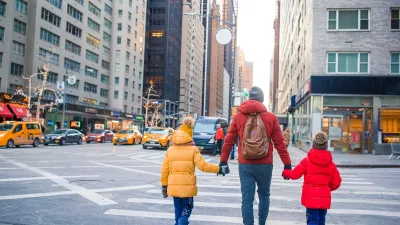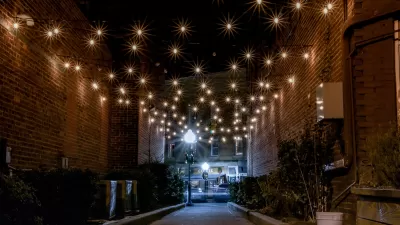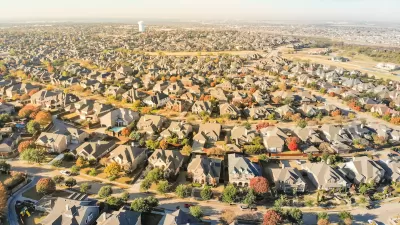Housing costs and availability are pushing more American households, including young families, to suburbs and exurbs — and they’re demanding changes.

Writing in Business Insider, Eliza Relman notes that “Most people in the US are suburbanites — and that likely won’t change anytime soon.” But that doesn’t mean suburbs and exurbs have to continue the unsustainable pattern of sprawl they have been known for for decades.
“As a suburb or exurb grows to accommodate more homes — which are mostly limited to detached single-family houses — roads grow, cars multiply, and the distance between someone’s house and their job, school, or grocery store stretches.” Consequently, “The challenge for urbanists, housing advocates, and anyone who cares about climate change is to figure out how to make the communities most Americans live in healthier for their inhabitants and the planet.”
Suburbs can change. They can become denser, more walkable, and more efficient, with mixed-use developments and essential needs within easy reach of residents. Already, restrictive zoning rules around the country are falling like dominoes as their impact on housing affordability becomes more evident.
According to the article, “all kinds of suburbs have the potential to free themselves from traffic and long commutes and create more vibrant neighborhoods. Suburbs need to prioritize loosening zoning laws, building more dense housing, and making it easier to get places without a car, experts say.”
FULL STORY: How millennials could give the suburbs a much-needed makeover

Alabama: Trump Terminates Settlements for Black Communities Harmed By Raw Sewage
Trump deemed the landmark civil rights agreement “illegal DEI and environmental justice policy.”

Planetizen Federal Action Tracker
A weekly monitor of how Trump’s orders and actions are impacting planners and planning in America.

The 120 Year Old Tiny Home Villages That Sheltered San Francisco’s Earthquake Refugees
More than a century ago, San Francisco mobilized to house thousands of residents displaced by the 1906 earthquake. Could their strategy offer a model for the present?

LA’s Tree Emergency Goes Beyond Vandalism
After a vandal destroyed dozens of downtown LA trees, Mayor Karen Bass vowed to replace them. Days later, she slashed the city’s tree budget.

Sacramento Leads Nation With Bus-Mounted Bike Lane Enforcement Cameras
The city is the first to use its bus-mounted traffic enforcement system to cite drivers who park or drive in bike lanes.

Seattle Voters Approve Social Housing Referendum
Voters approved a corporate tax to fund the city’s housing authority despite an opposition campaign funded by Amazon and Microsoft.
Urban Design for Planners 1: Software Tools
This six-course series explores essential urban design concepts using open source software and equips planners with the tools they need to participate fully in the urban design process.
Planning for Universal Design
Learn the tools for implementing Universal Design in planning regulations.
Ada County Highway District
Clanton & Associates, Inc.
Jessamine County Fiscal Court
Institute for Housing and Urban Development Studies (IHS)
City of Grandview
Harvard GSD Executive Education
Toledo-Lucas County Plan Commissions
Salt Lake City
NYU Wagner Graduate School of Public Service





























